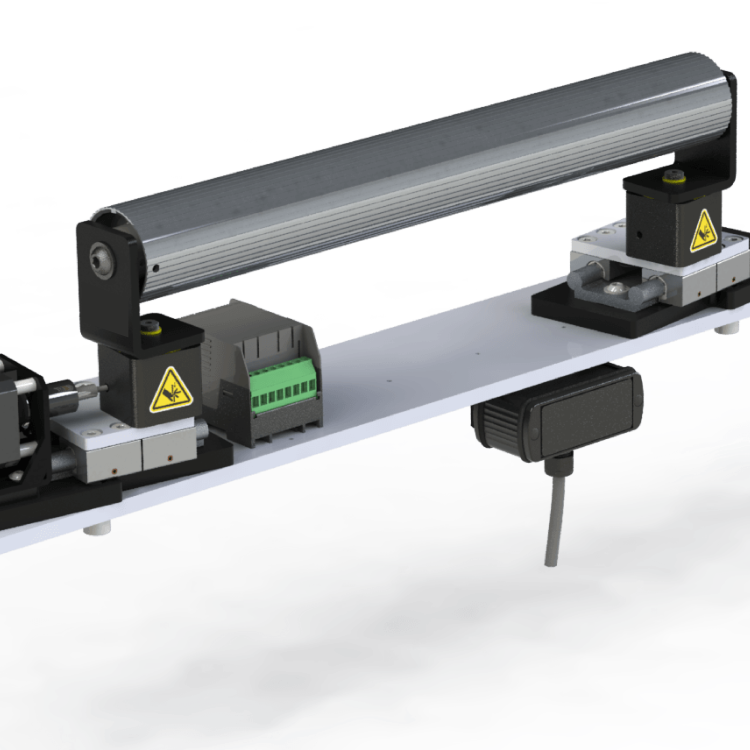In the rapidly evolving landscape of industrial automation, precision and efficiency are crucial. The web guide controller has emerged as an essential tool for managing the alignment of web materials in various manufacturing processes. This article provides an in-depth examination of the web guide controller, exploring its components, benefits, applications, and future trends.
Introduction to Web Guide Controllers
A web guide controller is a sophisticated device used to ensure that web materials—such as paper, film, or foil—are correctly aligned during production. It plays a crucial role in maintaining the precise positioning of materials as they move through different stages of the manufacturing process, ensuring high-quality output and operational efficiency.
Key Components of a Web Guide Controller
To understand the functionality of a web guide controller, it is essential to explore its primary components:
- Detection Sensors: These sensors are responsible for monitoring the position of the web material. They can be optical, laser, or ultrasonic sensors, each providing different levels of accuracy and response time.
- Control Unit: The control unit processes the data from the sensors and generates commands to adjust the web material’s position. It employs algorithms to interpret sensor data and make real-time adjustments.
- Actuators: Actuators carry out the adjustments required to correct misalignment. They may include motors, pneumatic cylinders, or hydraulic systems, responsible for moving rollers, guides, or other mechanical components.
- Mechanical Framework: The mechanical framework includes rollers, guides, and frames that support and direct the web material. Proper design and maintenance of this framework are critical for ensuring accurate alignment.
Advantages of Utilizing a Web Guide Controller
Implementing a web guide controller offers several benefits that enhance both production quality and efficiency:
Enhanced Alignment Accuracy
One of the primary advantages of a web guide controller is its ability to maintain precise alignment of web materials. Accurate alignment is essential for avoiding defects and ensuring that the final product meets quality standards.
Reduction in Material Waste
By ensuring that web materials are correctly aligned, web guide controllers help minimize waste caused by misalignment. This reduction in waste leads to significant cost savings and more efficient use of resources.
Improved Production Speed
Web guide controllers facilitate faster production speeds by automating the alignment process. Real-time adjustments reduce the need for manual interventions, resulting in smoother and more efficient operations.
Superior Quality Control
Consistent alignment achieved through a web guide controller directly contributes to better quality control. By maintaining precise alignment, these systems help produce products that adhere to industry specifications and quality standards.
Applications of Web Guide Controllers
Web guide controllers are versatile and find applications across various industries. Here are some key areas where these controllers are used:
1. Printing Industry
In the printing industry, web guide controllers manage the alignment of materials like paper and film during the printing process. This ensures that printed images and text are accurately positioned and reduces the likelihood of printing errors.
2. Packaging Sector
For the packaging industry, web guide controllers ensure that packaging materials, such as labels and films, are properly aligned. Accurate alignment is crucial for label placement and packaging integrity, which impacts product presentation and functionality.
3. Textile Industry
In textile manufacturing, web guide controllers help manage the alignment of fabrics as they undergo various processing stages. Proper alignment is necessary for applying coatings, laminates, and finishes evenly, resulting in high-quality textiles.
4. Film and Foil Manufacturing
Web guide controllers are essential in the production of films and foils, where they ensure accurate alignment during coating and processing. This precision is vital for producing high-quality films and foils that meet industry standards.
Innovations and Future Directions
As technology advances, web guide controllers are expected to incorporate several innovations and trends:
1. Integration with Smart Technologies
The future of web guide controllers may involve integration with smart technologies such as artificial intelligence and machine learning. These technologies will enhance the system’s ability to analyze data and make real-time adjustments, improving overall performance.
2. Enhanced Connectivity and Data Sharing
Improved connectivity features will enable web guide controllers to integrate seamlessly with other production equipment. This enhanced connectivity will facilitate better data sharing and coordination, optimizing the entire manufacturing process.
3. Increased Flexibility and Adaptability
Future web guide controllers are likely to offer greater flexibility, capable of handling a wider range of materials and production conditions. This increased adaptability will make them suitable for a broader array of applications and industries.
4. Focus on Energy Efficiency and Sustainability
Sustainability will become a more significant consideration in the development of web guide controllers. Future innovations may focus on reducing energy consumption, minimizing waste, and supporting environmentally friendly manufacturing practices.
Conclusion
The web guide controller is a vital technology in modern manufacturing, providing precise alignment of web materials to enhance product quality and operational efficiency. With its key components, including detection sensors, control units, actuators, and mechanical frameworks, the web guide controller ensures accurate positioning and smooth production processes.
The benefits of utilizing a web guide controller include enhanced alignment accuracy, reduced material waste, improved production speed, and superior quality control. As technology continues to evolve, web guide controllers are expected to integrate with smart technologies, offer enhanced connectivity, and provide greater flexibility.
In summary, web guide controllers play a crucial role in achieving high standards in manufacturing processes. Their ability to deliver precise alignment and adapt to diverse applications makes them essential for maintaining competitiveness and meeting industry demands.


















